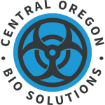This change was in response to criticism that the name “Check” implied that the team was simply reacting to issues that have happened as opposed to “studying” the issues as they are occurring. The language may change slightly, but the basic thinking has not changed much. Consider the three-phase concept—Build, Measure, Learn—popularized by Eric Ries in his book, The Lean Startup. His iterative process is fundamentally similar to both the original Shewhart and Deming cycles. Words may change or be slightly altered, but the timeless, classic concepts stay the same. PDCA is an improvement cycle based on the scientific method of proposing a change in a process, implementing the change, measuring the results, and taking appropriate action.
Project Leader at Boston Consulting Group (BCG)
This increases efficiency and eliminates ineffective elements until the optimal solution can be identified. This is probably the most important stage of the PDCA cycle. If you want to clarify your plan, avoid recurring mistakes, and apply continuous improvement successfully, you need to pay enough attention to the CHECK phase. Lucidchart, a cloud-based intelligent diagramming application, is a core component of Lucid Software’s Visual Collaboration Suite. This intuitive, cloud-based solution empowers teams to collaborate in real-time to build flowcharts, mockups, UML diagrams, customer journey maps, and more.
PDCA Cycle as an Iterative Process
In construction, this phase could look at adherence to safety standards and timelines. Businesses avoid reliance on intuition or untested assumptions. When considering implementation of Lean methods, whether it be in a manufacturing or office based environment, the Lean Process will be fundamental. Edward Deming expanded the Shewart cycle into a four-step pattern for Japanese audiences.
Reasons Why Everyone Should Time Block Their Schedule
In this blog post, we will delve deeply into the PDCA cycle, elucidating its relevance and profound importance in strategic planning and quality management. The cycle can also be applied to maintenance processes in manufacturing. The PDCA process supports both the principles and practice of continuous improvement and Kaizen. Kaizen focuses on applying small, daily changes that result in major improvements over time.
- Additionally, teams should anticipate potential obstacles and risks, devising strategies to mitigate these challenges.
- It can be part of a bigger planning process, such as Hoshin Kanri.
- The cyclical nature of this model allows teams to identify and remove defects early in the process and restart the cycle until the desired outcome is reached.
- Developed in 1950, the PDCA cycle was created by an American engineer, statistician, and management consultant, Dr. W. Edwards Deming.
- And if you got poor or mixed results, use what you learned to go back to the drawing board and start again.
- Measuring outcomes and iterating on processes helps organizations make informed decisions based on empirical evidence rather than assumptions.
By deploying this model, organizations aim to enhance their internal and external processes by eliminating any issues along the way of the work process. PDCA cycle is an iterative process for continually improving products, people, and services. It became an integral part of what is known today as Lean management.
What is agile, iterative development, or the PDCA cycle?
Its genesis is attributed to William Edwards Deming, who is a revered figure in the realm of quality management. The PDCA cycle is a powerful tool for organizations committed to continuous improvement. By following the structured approach of planning, executing, evaluating, and adjusting, teams can drive meaningful change and enhance overall performance. Its origins in quality management, coupled with its versatility, make it applicable across various sectors and challenges. In today’s fast-paced business environment, organizations must continuously improve processes to remain competitive. The PDCA cycle—short for Plan-Do-Check-Act—provides a robust framework for ongoing improvement.
You can also work on multiple elements of your project at the same time since each piece isn’t dependent on the piece before it, which shortens your timeline. Teams execute the plan with attention to operational demands. This stage must remain fluid, allowing adjustments to suit real-time constraints. In retail, this could involve reorganizing store layouts for better customer flow.
In addition, the approach allows customers to be involved during the development process, leaving no place for retroactive changes to be made after deliverables are released. During the Do phase, a CMMS facilitates the implementation and testing of new maintenance strategies. Work orders can be easily created and assigned to the appropriate personnel, while the CMMS tracks progress and collects data on the effectiveness of the changes. The process is also instrumental in improving patient care and operational efficiency in the healthcare space. Hospitals can apply the cycle to enhance processes such as patient admission, treatment protocols, or discharge procedures.
Originating from the field of quality management, the PDCA Cycle stands as a testament to the universal principles of continuous improvement. At its core, PDCA – Plan, Do, Check, Act – is a repetitive four-stage model. Industries of all types adopt it for the optimization of processes and resolution of problems. Its versatility not only transcends various sectors but also allows for customized applications within specific environments.
- It provides an iterative approach to help project teams determine and analyze solutions and improve them through a waste-reducing cycle.
- Previously, you developed, applied, and checked your plan.
- If you’re not investing serious thought at the beginning to define the scope of your project, you could end up getting distracted by side issues that pop up as you’re completing your work.
- Data is collected during this phase to evaluate the impact of the changes made.
- The Plan-Do-Check-Act model includes solutions testing, analyzing results, and improving the process.
The Deming cycle related heavily to the concept of product quality, innovation, and learning-by-doing over the entire life cycle of a product. After you have agreed on the plan, it is time to take action. At this stage, you will apply everything that has been considered during the previous stage. Keep in mind you and your team may need to go through which of the following is iterative four stage approach for continually improving the process the plan a couple of times before being able to proceed. In this case, it is appropriate to use a technique for creating and maintaining open feedback loops, such as Hoshin Kanri Catchball. It will allow you to collect enough information before you decide to proceed.

